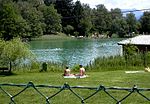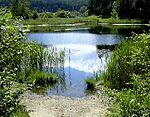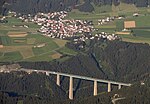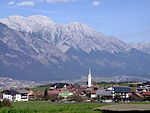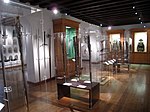Olympic Sliding Centre Innsbruck
Bobsleigh, luge, and skeleton tracksOlympic bobsleigh venuesOlympic luge venuesSports venues in AustriaSports venues in Tyrol (state) ... and 3 more
Venues of the 1964 Winter OlympicsVenues of the 1976 Winter OlympicsVenues of the 2012 Winter Youth Olympics

The Olympic Sliding Centre Innsbruck is a venue for bobsleigh, luge and skeleton located in Igls, Austria (southeast of Innsbruck). The most recent version of the track was completed in 1975 and is the first permanent, combination artificially refrigerated bobsleigh, luge, and skeleton track, serving as a model for other tracks of its kind worldwide. It hosted the bobsleigh, luge, and skeleton competitions for the 2012 Winter Youth Olympics.
Excerpt from the Wikipedia article Olympic Sliding Centre Innsbruck (License: CC BY-SA 3.0, Authors, Images).Olympic Sliding Centre Innsbruck
Heiligwasserwiese, Innsbruck Igls
Geographical coordinates (GPS) Address Website Nearby Places Show on map
Geographical coordinates (GPS)
| Latitude | Longitude |
|---|---|
| N 47.22216 ° | E 11.43004 ° |
Address
Staffhouse
Heiligwasserwiese 1a
6080 Innsbruck, Igls
Tyrol, Austria
Open on Google Maps


